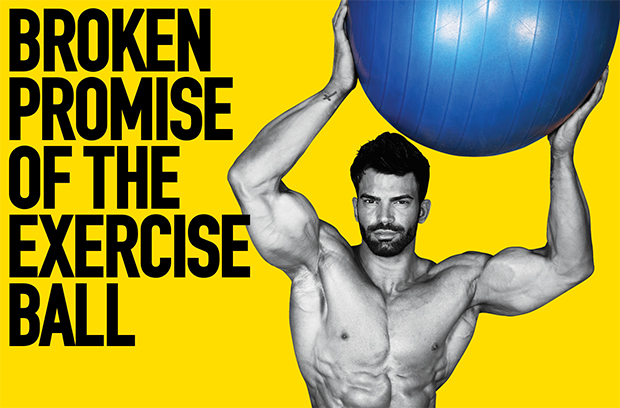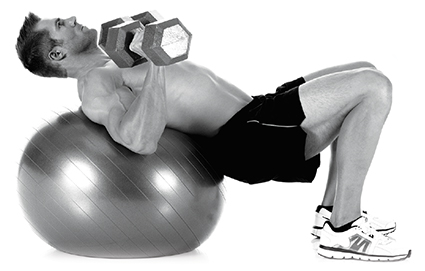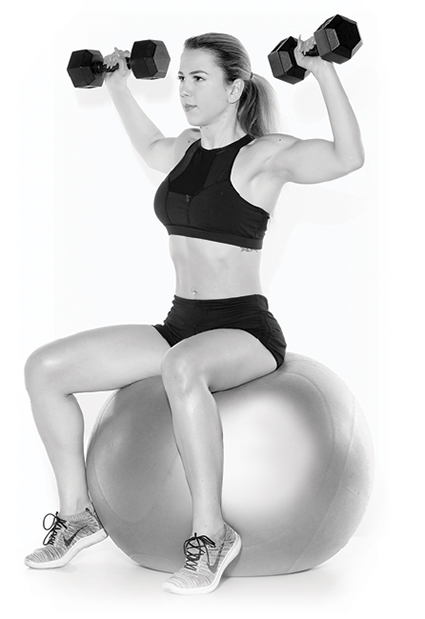Broken Promise of the Exercise Ball

Functional training debunked for muscle gain and weight loss
Although many fitness instructors and trainers love to advertise “functional training” as their niche, what are the real benefits for those looking to add size and strength? Do BOSU ball squats and handstand push-ups really help the average lifter who’s trying to add mass?
Lately my social media feeds have become downright diseased with PTs claiming that medicine balls and kettlebells are the gateway to a quicker strength and muscle tissue yield. The allure of this type of training is that it seems very entertaining to beginners and the uneducated. However, if you’re looking for undoubtable progress in terms of lifting more weight and adding inches to your chest, arms, and legs, progressive overload is still king—and science backs it up.
 Before you start your next set of one-arm band-assisted pull-ups, take this into consideration: in terms of hypertrophy and strength, your body adapts to continual overload. It’s a lot harder to do this when you can’t add weight to exercises because you need to balance, are loading inefficiently, and randomly pick exercises in workout after workout.
Before you start your next set of one-arm band-assisted pull-ups, take this into consideration: in terms of hypertrophy and strength, your body adapts to continual overload. It’s a lot harder to do this when you can’t add weight to exercises because you need to balance, are loading inefficiently, and randomly pick exercises in workout after workout.
So, what exactly is “progressive overload” then? Think of it as the gradual increase of stress upon the body during exercise. To accrue muscle tissue and gain strength, the muscles need to be stressed such that the body responds with an adaptation with the new demand (strength and/or endurance). In this process, the adaptation calls for muscular hypertrophy. The prerequisites for this specific response are an increase in training volume, intensity, or frequency.
Sure, certain sports-specific training may require balance-movement training or may focus on more explosive movements. However, it’s just trivial for the person trying to work up to a three-plate squat or looking to add an appreciable amount of muscle in the most effective way possible.
Another easily ignored point is time under tension, another key to accruing muscle tissue and making strength gains. Put someone under a barbell, teach them proper technique, and tell them to squat for 12 reps. They should be able to maintain constant tension throughout the entire set. Now put that same person on a BOSU ball in a Smith machine. They will lose tension sporadically throughout the set due to the unnatural fixed bar path of a Smith machine and, of course, due to having to prioritize balance, the Holy Grail of functional training zealots.
 Just use common sense! Trying to build a dense chest? What do 99 percent of people that have big chests attribute it to? Flat presses, whether it be dumbbells, barbells or what have you. Very few will say they added strength and size doing clapping push-ups on medicine balls. Big legs? You guessed it, get under a bar, with your feet flat on the ground.
Just use common sense! Trying to build a dense chest? What do 99 percent of people that have big chests attribute it to? Flat presses, whether it be dumbbells, barbells or what have you. Very few will say they added strength and size doing clapping push-ups on medicine balls. Big legs? You guessed it, get under a bar, with your feet flat on the ground.
When it comes to progressing lifts and forcing that adaptation, micro-loading is a really efficient way to ensure no alteration in form. A five-pound progression on a lift every couple of weeks not only is sustainable but also allows you to potentially add another rep or two at that rate. I personally bought two half-kilo plates that I use during prep so that I can ensure I’m still progressing even though calories are lowering. Of course, this demands you log your training (something I preach to everyone) so that you can meticulously monitor progress in terms of reps or weight. In order to truly ensure adaptation, you mustn’t sacrifice form for additional reps or poundage, though.
So, next time you’re about to hit someone overhead-kettlebell one-legged pistol-squats, maybe just slap a little more weight on the bar in the squat rack than you did last time.
Get articles like this one delivered to your email each month by signing up for Muscle Insider’s mailing list. Just click here.

